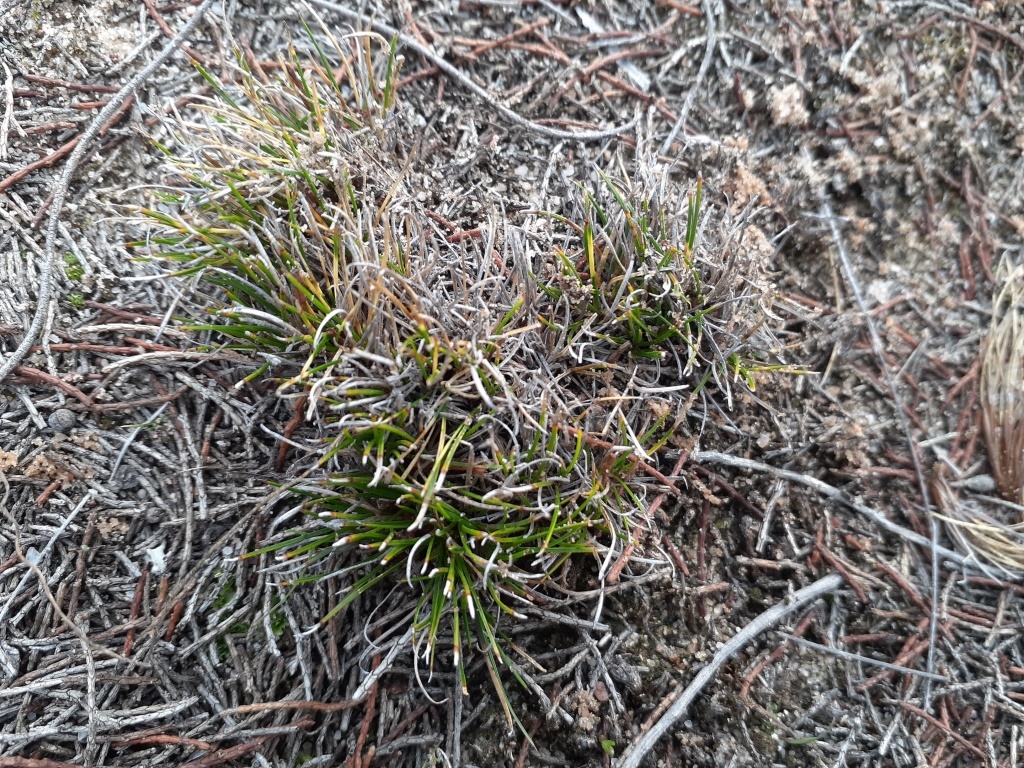Schoenus breviculmis
Benth.Small perennial, very shortly rhizomatous, forming low, deep-rooted tussocks or mats. Culms erect, rigid, terete, grooved, nodeless, shorter than leaves, 1–6 cm high, c. 0.5 mm diam. Leaves with blade to 6 cm long; sheath yellow-brown, smooth, shining; mouth glabrous; ligule absent. Inflorescence of 1 or 2 spikelets, erect; lowest involucral bract to 2 cm long. Spikelets narrow-ovate, acute, 1–2-flowered, 8–10 mm long; glumes 3 or 4, lowest 0–2 empty, acute, red-brown, shining, with glabrous, hyaline margins; fertile glumes c. 8 mm long; hypogynous bristles absent or minute. Nut trigonous, obovoid to subglobose, transversely wrinkled, pubescent near apex, glistening, straw-coloured with darker patches, 1.1–1.5 mm long, c. 1 mm diam. Flowers most of year.
LoM, MuM, Wim, GleP, VVP, GipP, OtP, Gold, GGr, DunT, WPro. Also WA, SA. Generally occurring on deep sands supporting heathland and heathy or grassy woodland (e.g. Little and Big Deserts, Grampians, Edenhope district) with disjunct occurrences near Anglesea and (on heavier soils) near Maryborough and near Winchelsea.
Wilson, K.L. (1994). Cyperaceae. In: Walsh, N.G.; Entwisle, T.J., Flora of Victoria Vol. 2, Ferns and Allied Plants, Conifers and Monocotyledons, pp. 238–356. Inkata Press, Melbourne.
 Spinning
Spinning

